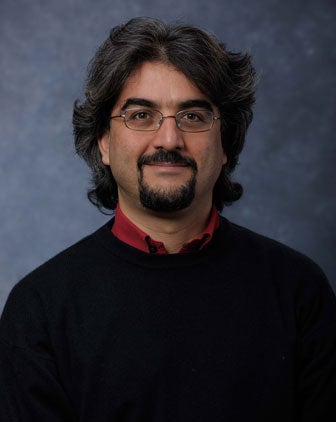
Subscribe to Pittwire Today
Get the most interesting and important stories from the University of Pittsburgh.Engineer Battles Noise Pollution With a Grant from the National Science Foundation
People deep in concentration tend to shut out unwanted noises when trying to accomplish tasks, but a modern life is full of sounds: drivers honking their car horns, co-workers talking loudly one office over, construction down the block.
These annoyances permeating through homes and office buildings do more than irritate and hinder productivity — they can also cause health problems such as mental stress, hypertension and sleep disorders.
A study led by Piervincenzo (Piero) Rizzo, associate professor of civil and environmental engineering at the University of Pittsburgh’s Swanson School of Engineering, will explore fundamental new research to create a new kind of noise barrier to shield traffic-generated and indoor-generated noise. Rizzo's project, titled “EAGER: Acoustic Diode as Architectural Material (ADAM),” was awarded a $200,000 grant from the National Science Foundation, which will fund the project for two years.
First, Rizzo's team will create numerical simulations of their proposed barriers. Then they will build physical prototypes and test the effectiveness of the barriers by placing a loudspeaker on one side and a microphone on the other to record how much sound is getting through the barriers.
The barrier's construction is based on acoustic diodes — devices that allow sound energy to travel in one direction, but not in the other. Traditional building materials such as steel and brick are limited in their ability to muffle sounds this way.
Rizzo’s hypothesis is that an acoustic diode can be created with the proper assembly of individual elements called unit cells that are fashioned from conventional building materials but are constructed into repeating patterns. That architectural structure will trap noise inside the diodes, where the sounds reflect and eventually decay. The idea is that the diode can be embedded between two supporting plates, and the resulting patterned barrier will shield unwanted noises.
The study will also determine the most cost-effective design of the unit cells.
“The long-term objective is to create a novel architectural noise barrier that's lighter, thinner and less expensive than any system currently used to shield traffic and/or indoor noise,” Rizzo said. “We’d like to use cheaper materials that can achieve better insulation.”
Beyond developing these diodes, Rizzo also studies health monitoring, signal processing and automatic pattern recognition for real-time evaluation of structural and biological materials.
In 2015 the International Workshop on Structural Health Monitoring recognized Rizzo as the Structural Health Monitoring Person of the Year. In 2016, he received the Chancellor’s Distinguished Research Junior Scholar Award, Pitt’s most esteemed award given to young faculty.



